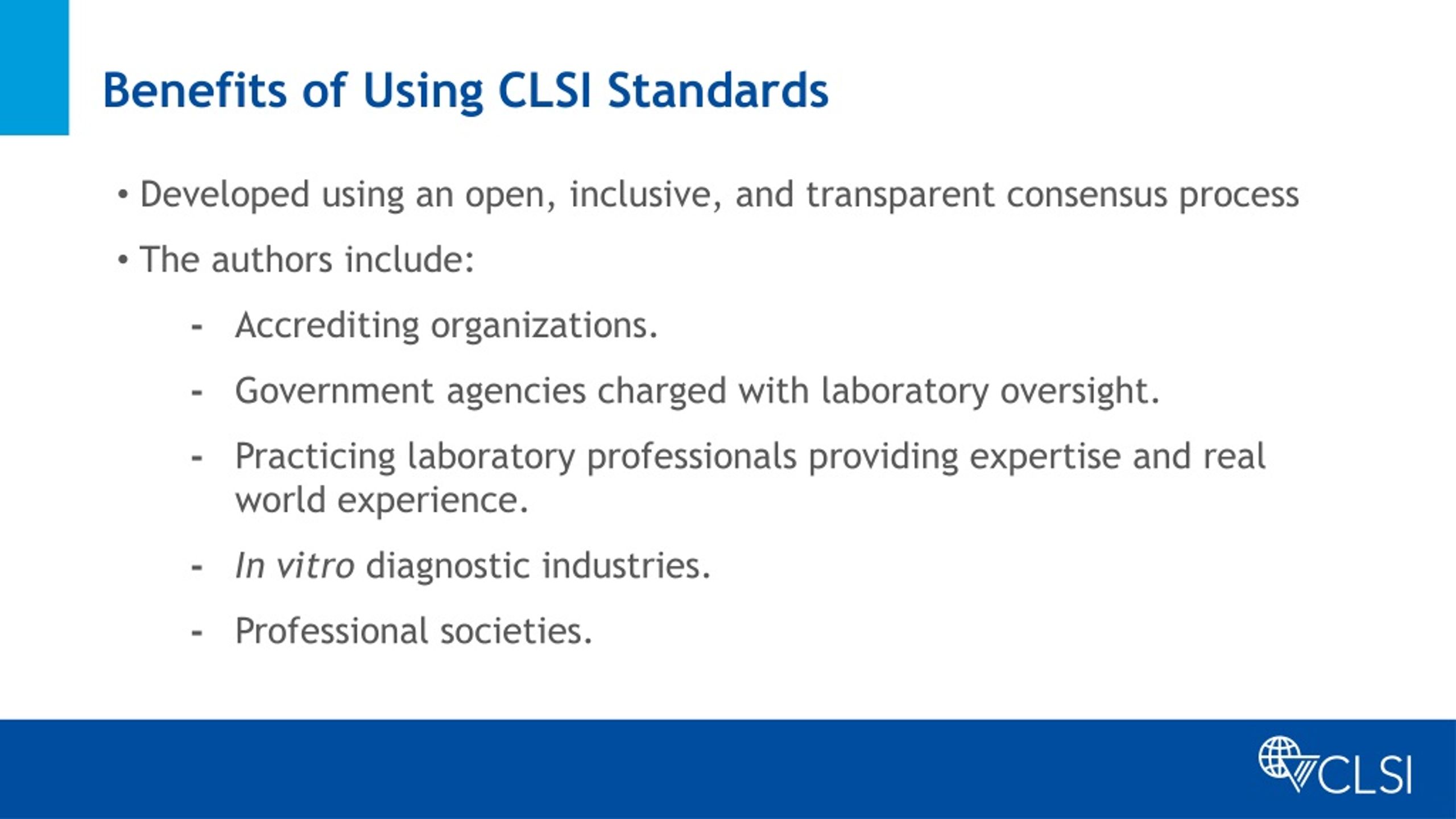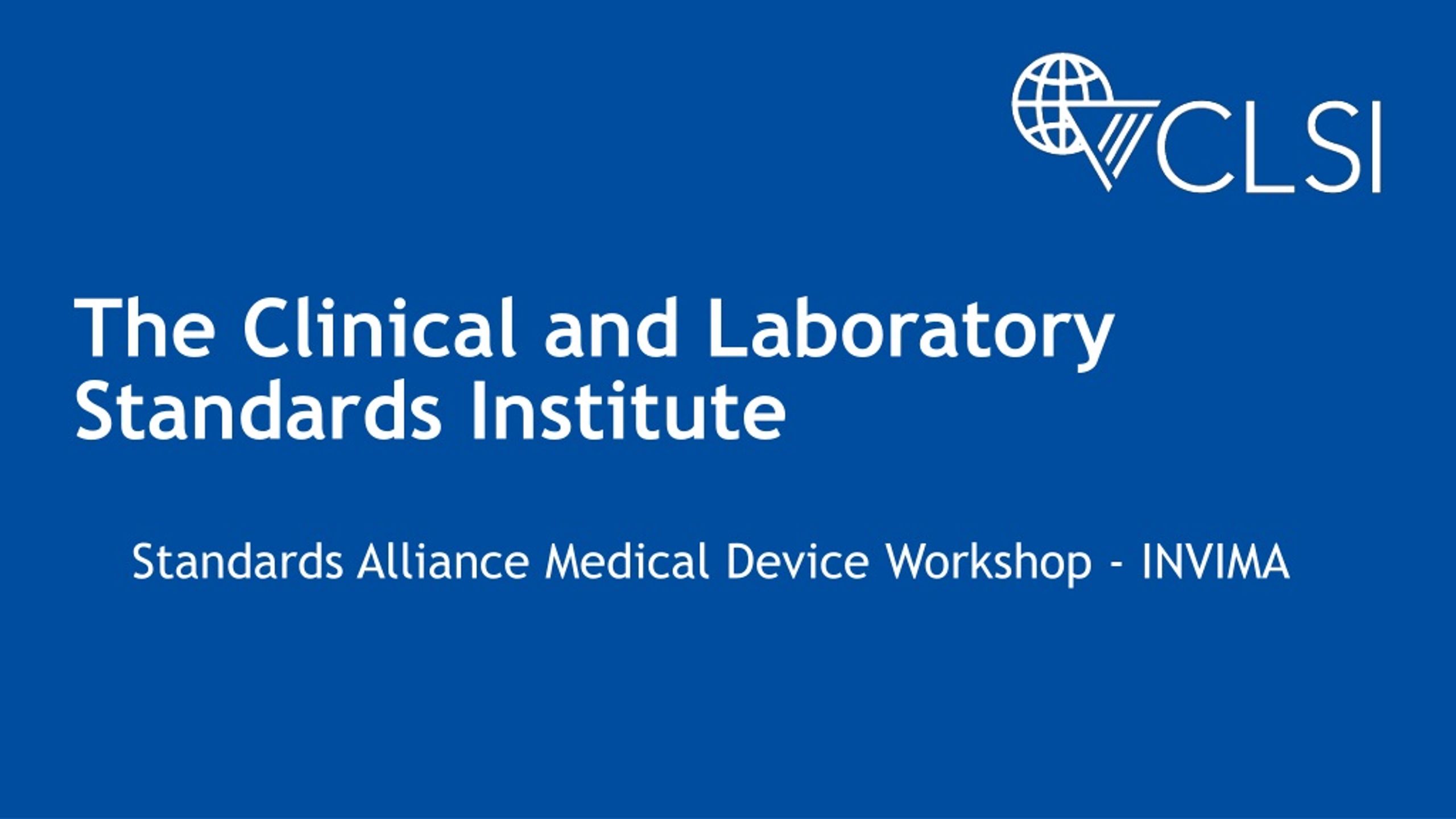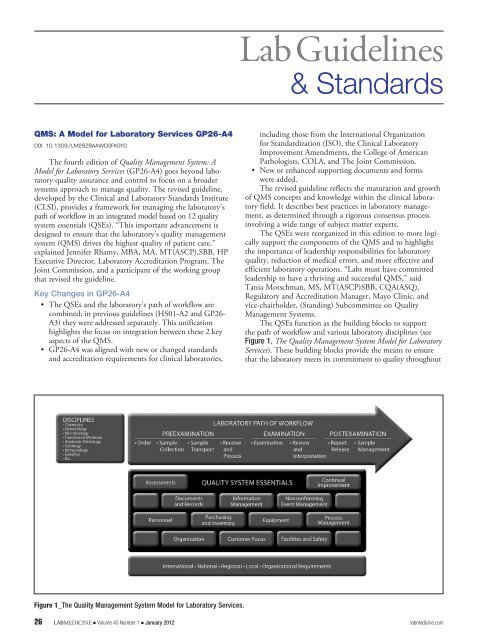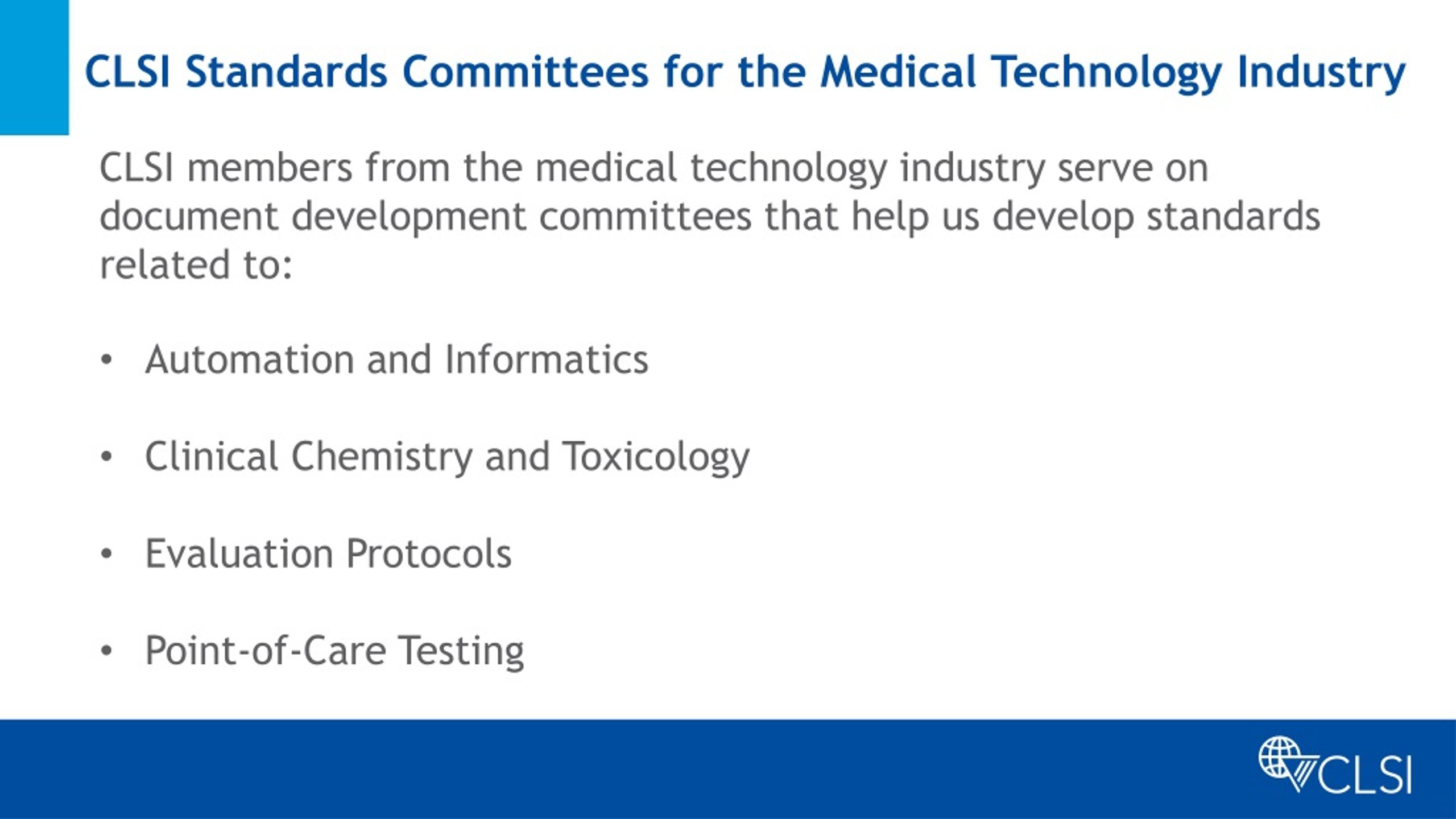Clinical And Laboratory Standards Institute Clsi
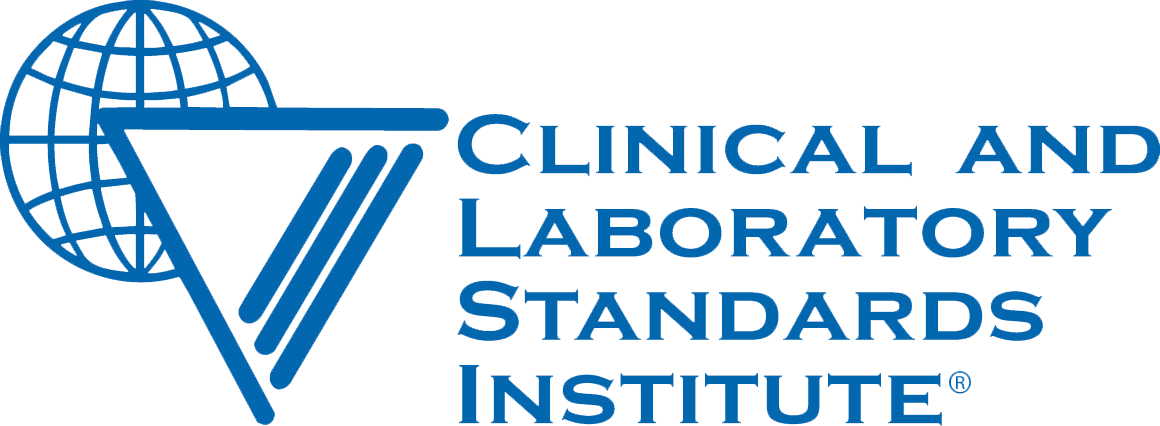
Imagine a world where medical tests are a language everyone understands, where a blood test in Boston means the same thing as one in Beijing. No guesswork, no translation needed—just clear, reliable results guiding healthcare decisions worldwide. This isn’t a futuristic fantasy; it’s a reality being meticulously built, test by test, standard by standard, by an organization you might not know but one that profoundly impacts your health: the Clinical and Laboratory Standards Institute.
At the heart of global healthcare quality lies CLSI, a non-profit standards developing organization. It bridges the gap between scientific discovery and practical application in the clinical laboratory. This article delves into the world of CLSI, exploring its history, mission, and the pivotal role it plays in ensuring accurate and reliable medical testing across the globe.
A Foundation Built on Collaboration
The story of CLSI begins in 1968, when it was founded as the National Committee for Clinical Laboratory Standards (NCCLS). A group of dedicated professionals recognized the urgent need for standardized laboratory practices.
In a time before widespread automation and digital connectivity, variability in testing methods was a significant challenge. The founders envisioned a collaborative platform where experts could come together to develop consensus-based standards.
The organization's name evolved to Clinical and Laboratory Standards Institute (CLSI) in 2005, reflecting its expanded scope and global influence.
The Mission: Quality Through Standardization
CLSI’s mission is simple yet profound: to develop and promote the use of voluntary consensus standards and guidelines within the healthcare community. These standards cover the entire testing process, from specimen collection and handling to test performance and result interpretation.
The organization's core values center on collaboration, consensus-building, and a commitment to scientific integrity. CLSI strives to create documents that are practical, evidence-based, and reflective of the latest advancements in laboratory medicine.
The organization aims to improve the quality of healthcare services by reducing variability, enhancing reliability, and ensuring patient safety through standardized procedures.
The Standards Development Process
CLSI's standards are not created in a vacuum; they are the result of a rigorous, multi-step process involving a diverse group of stakeholders. This process ensures that the resulting documents are comprehensive, balanced, and widely applicable.
Technical expert panels, composed of volunteers from various sectors including academia, industry, government, and clinical practice, are the backbone of the standards development process. These panels work collaboratively to identify best practices, review scientific literature, and draft standards documents.
A key aspect of CLSI’s approach is the use of a consensus-based model. This means that all stakeholders have an opportunity to provide input and that the final document reflects a general agreement among the panel members.
Draft standards are subjected to public comment periods, allowing anyone with an interest to review and provide feedback. This open and transparent process ensures that the standards are robust and reflective of real-world needs.
The standards are continuously reviewed and updated to reflect advancements in technology, changes in regulatory requirements, and evolving best practices. This ensures that CLSI documents remain relevant and effective over time.
The Breadth and Depth of CLSI Standards
CLSI's portfolio of standards is vast, covering virtually every aspect of clinical laboratory testing. From hematology and microbiology to molecular diagnostics and point-of-care testing, CLSI has developed guidelines to ensure quality and consistency.
Some of CLSI's most widely used standards address topics such as specimen collection (e.g., blood, urine, and other body fluids), method validation, quality control, and laboratory information management systems.
Beyond specific testing procedures, CLSI also develops standards related to laboratory management, personnel training, and safety. These standards help laboratories create a culture of quality and continuous improvement.
The organization also provides educational resources, including workshops, webinars, and publications, to support the implementation of its standards. This helps laboratories effectively translate the standards into their daily practices.
Global Impact and Recognition
CLSI standards are recognized and used worldwide, playing a crucial role in harmonizing laboratory practices across borders. The organization collaborates with international organizations, such as the World Health Organization (WHO), to promote the adoption of its standards globally.
Many national accreditation bodies and regulatory agencies reference CLSI standards in their requirements for laboratory certification and licensure. This underscores the credibility and authority of CLSI within the healthcare community.
By providing a common framework for laboratory testing, CLSI standards facilitate the exchange of data and research findings across countries. This is particularly important in areas such as infectious disease surveillance and global health initiatives.
Beyond the Laboratory: Impact on Patient Care
The ultimate goal of CLSI's work is to improve patient care. By ensuring the accuracy and reliability of laboratory tests, CLSI standards contribute to more informed diagnoses, more effective treatments, and better patient outcomes.
Accurate laboratory results are essential for monitoring disease progression, assessing treatment response, and making critical decisions about patient management. CLSI standards help minimize the risk of errors that could lead to misdiagnosis or inappropriate treatment.
In an era of personalized medicine, where treatment decisions are increasingly tailored to individual patient characteristics, the reliability of laboratory data is more important than ever. CLSI standards play a vital role in ensuring that these decisions are based on sound scientific evidence.
Challenges and Future Directions
As healthcare continues to evolve, CLSI faces new challenges and opportunities. The rise of new technologies, such as next-generation sequencing and artificial intelligence, requires the development of new standards and guidelines.
CLSI is actively working to address these challenges, collaborating with experts in emerging fields to develop standards that are relevant, practical, and forward-looking.
Another key area of focus for CLSI is expanding its reach and impact in developing countries. By providing access to its standards and educational resources, CLSI aims to improve laboratory quality and healthcare outcomes in resource-limited settings.
CLSI recognizes the importance of continuous innovation and collaboration in maintaining its relevance and effectiveness. The organization is committed to engaging with stakeholders across the healthcare spectrum to shape the future of laboratory standardization.
A Quiet Force for Good
CLSI may not be a household name, but its impact on healthcare is undeniable. Through its unwavering commitment to quality, collaboration, and scientific integrity, CLSI is quietly working to make medical testing more reliable, more accurate, and more accessible for everyone.
The next time you have a blood test or other laboratory procedure, remember that CLSI is there, behind the scenes, ensuring that the results you receive are based on the best possible standards. It is a global effort to translate science into practice, one test, one standard, one patient at a time.
The dedication of the volunteers and staff at CLSI is a testament to the power of collaboration in advancing healthcare. Their work is a reminder that even seemingly technical standards can have a profound impact on human lives. CLSI is an organization making a real difference in the world.
